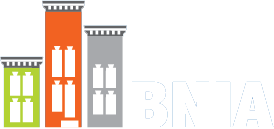Since the Federal Opportunity Zones (OZ) where announced in 2017, there has been both welcome anticipation and also not insignificant anxiety about the impact that these kinds of funds could have on Baltimore’s communities. The OZs were announced at about the same time as Mayor Pugh’s Neighborhood Impact Investment Fund, which is great news with respect to bringing resources into Baltimore’s marginalized communities.
But from the vantage of the communities that we have been working with in Baltimore since 2000, every community wants on the one hand to continuously attract investment and development but on the other hand be able to have an equal voice with respect to how that can happen over the long term. We have been working with communities to better understand the data that developers and investors are also looking at to advocate for changes that will empower them to be equal partners in the vision for their neighborhoods that development could help implement.
To help connect these different stakeholders, we’ve put together an interactive mapping tool that can help anyone see where Baltimore’s OZ’s are in relation to the NIIF areas, community indicators in the Vital Signs report and active Community Development Corporations (CDCs) that can help bring forward the neighborhoods objectives.
Putting Baltimore’s OZ’s in Context Interactive Mapping Tool
- Opportunity Zones (OZ): were enacted into federal law through the Tax Cuts and Jobs Act of 2017 to spur private investment in distressed communities across the United States. Learn more at http://baltimoredevelopment.com/opportunity-zones
- Neighborhood Impact Investment Funds (NIIF): were created in 2018 by Mayor Pugh to be overseen by a new public-private nonprofit partnership designed to spark investment in and spread economic opportunity to neighborhoods https://mayor.baltimorecity.gov/news/press-releases/2018-12-19-board-estimates-approves-517-million-loan-neighborhood-impact
- Community Development Corporations (CDC): To see the full list of community organizations, visit the City’s Community Association Directory (CAD) http://cityservices.baltimorecity.gov/cad/Home.aspx
- Community Profiles from the Vital Signs report: Every year the Baltimore Neighborhood Indicators Alliance releases more than 100 quality of life indicators for all communities in Baltimore www.bniajfi.org
See how to use the Opportunity Zone Interactive Map to answer questions about how all of these areas overlap in communities.



